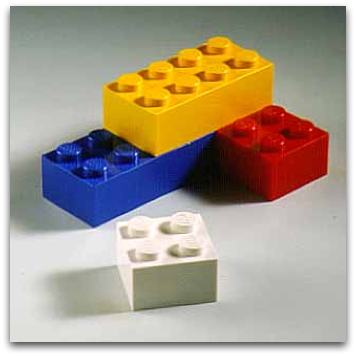This is a plan for carrying out an investigative project over the course of one semester.
The difference between a successful investigative project versus an aba ndoned one has little to do with the premise of the investigation. Rather it depends on whether the person carrying out the investigation did so in a systematic manner.
ndoned one has little to do with the premise of the investigation. Rather it depends on whether the person carrying out the investigation did so in a systematic manner.
Establish and follow a step-by-step game plan, and you will find that you can design an investigative project that can actually get done.
- It can be applied to a team approach or to a project undertaken by a single student on the newspaper.
- It is geared to any campus paper, regardless of financial resources or staffing size.
The difference between a successful investigative project versus an aba
 ndoned one has little to do with the premise of the investigation. Rather it depends on whether the person carrying out the investigation did so in a systematic manner.
ndoned one has little to do with the premise of the investigation. Rather it depends on whether the person carrying out the investigation did so in a systematic manner.Establish and follow a step-by-step game plan, and you will find that you can design an investigative project that can actually get done.
Week Two: Form your I-Team
Don't start your project the first week of the term.

The first week is too hectic. So start the second week.
1. Choose the leader:
- Who is most organized?
- Who commands the most respect?
2. Divvy up responsibilities according to capabilities:
- Who is good at interviewing?
- Who is good at gathering data?
- Who wants to handle public records requests?
- Who is the best writer?

If you don't meet to discuss progress, little progress will be made.

4. Establish a communication and information sharing system that will work for you.
You need a way to share your notes and to brainstorm on sourcing and for questions for interviews. Think about setting up:
- Wikis
- Private listserv
- Google Docs
- Chat Forums
- Private Facebook group
Week Three: Divide the project into pieces
Spending of Student Fees
A. How much do students pay?
B. How is it done elsewhere?
C. Who distributes the money?
D. Clubs and activities who gets: Winners and losers
E. How money is distributed
F. Membership of clubs -- is it all the same people?
G. What do the clubs do with the money?
Week Four: Come up with a list of possible sources
- Those affected by the problem
- Those responsible for the problem
- Those who can help explain the problem
- Those with power to correct the problem
- Those who can fill in the holes.
If you don't set deadlines it won't get done!
Week Five: Outline your story
Here's a general outline for a complex story
Then schedule it for publication.

- Who will help you tell it?
- What is your narrative thread?
- What is your tentative lede?
- What are your story elements?
- What are your secondary ledes?
- Why will your reader care?
- Make sure everyone knows the plan
- Think Deep Coverage: Can you connect other stories or sections to your main theme?
- Is there a campus connection?
- Is there a sports connection?
- Are the art students affected?
- Is there a connection to the wider community?
- What will the editorial address?
Here's a general outline for a complex story
The Lede:
This sucks the reader into the story. It could be a descriptive lede, an anecdotal lede or a "you" lede. Or something clever.
Nut graph:
Summarizes for the reader the gist of the story and summarizes its key points so the reader knows why its important to read to the end.
First PointQuotePoint Two
- Evidence for point one: Example
- Evidence for point one: Data
- Evidence for point one: Expert opinion
QuoteSecondary lede (Shake your reader awake!)
- Evidence for point two: Example
- Evidence for point two: Document
- Evidence for point two: Example
Point ThreeQuote
- Evidence for point three: Geographical comparison
- Evidence for point three: Historical comparison
- Evidence for point three: Expert Opinion
Point FourQuoteYou get the idea..
- Evidence for point four: Data
- Evidence for point four: Document
- Evidence for point four: Personal observation
Week Six: Storyboard it.
Then schedule it for publication.

Think about:
- Your cover
- Your center spread
- Using color if you've got it
- Sidebars
- Photos and graphics
- Alternative ways of telling your story such as timelines, maps, Q&As, Question of the Week (man on street), profiles, Top 10 lists, etc.
Week Seven1. Do you want to publish it as a single package in one issue?Plan on publishing no later than the third to last issue. That way you:
- Allow for responses
- Allow for follow up stories
- Allow for problems in execution
2. Would it be more effective if you parcelled out stories across issues?
- Design a connecting headline and logo
- Keep all stories together in a special section on Web site
- Design a box that summarizes all the pieces in the story and the dates of publication
**Never promise readers anything until you have all pieces ready for publication
Week Eight: Verify EVERYTHING
Other reporters/editors should call
all sources in the story/stories to fact-check quotes, paraphrases in context and all facts. Redo any math and double check your numbers.Finally publish and follow up after readers respond.



No comments:
Post a Comment